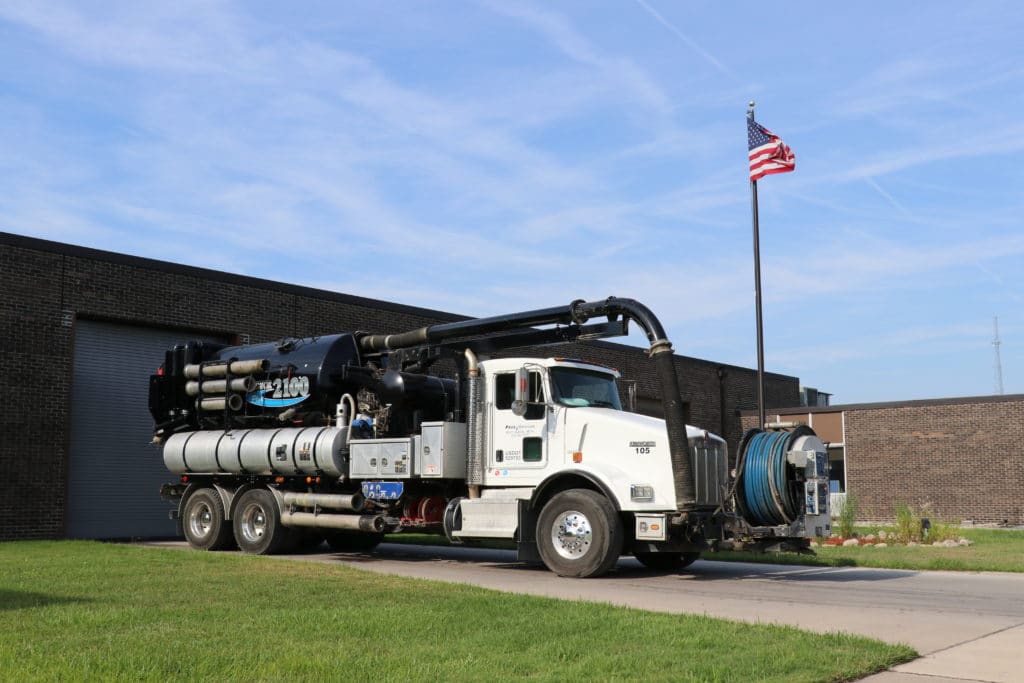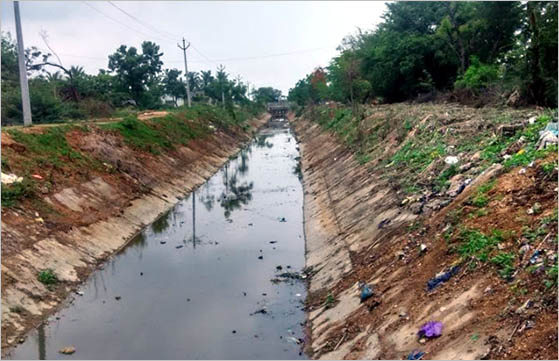Cutting-edge Industrial Wastewater Treatment Solutions: Shielding the Environment
Cutting-edge Industrial Wastewater Treatment Solutions: Shielding the Environment
Blog Article
Exactly How Fluid Garbage Disposal Functions: An In-depth Introduction of Methods and Technologies Employed

Review of Liquid Waste Types
The complexity of liquid waste types requires a detailed understanding of their characteristics and effects for disposal. Liquid waste can broadly be categorized right into numerous kinds, including industrial, local, farming, and dangerous waste. Each classification displays unique buildings, calling for details monitoring techniques to alleviate environmental and health and wellness risks.
Industrial liquid waste stems from producing processes and frequently contains a range of impurities, such as heavy metals, solvents, and organic substances. Metropolitan fluid waste, mainly consisting of wastewater from homes and industrial facilities, has raw material, nutrients, and microorganisms (industrial wastewater treatment). Agricultural liquid waste, consisting of overflow from farms, may include fertilizers, chemicals, and animal waste, posing threats to water quality and communities
Hazardous liquid waste is identified by its toxicity, sensitivity, or potential to trigger injury. Comprehending these varied fluid waste types is essential for developing effective disposal techniques and making certain compliance with ecological regulations.
Physical Therapy Techniques

Screening is the preliminary step, where larger bits and particles are eliminated from the liquid waste utilizing screens or grates. This process secures downstream devices from damage and makes sure smoother operation. Complying with screening, sedimentation uses gravitational force to separate solids from fluids. In sedimentation containers, much heavier bits clear up near the bottom, developing a sludge layer, while the cleared up liquid can be further dealt with.
Filtering is one more necessary technique that involves passing the fluid via porous materials, such as sand or membranes, to record smaller particles. This action enhances the top quality of the liquid, making it suitable for succeeding treatment procedures.

Chemical Therapy Methods
Chemical treatment techniques are essential for successfully managing fluid waste, especially in addressing liquified and colloidal impurities that physical methods might not properly remove. These strategies make use of various chemical representatives to reduce the effects of, speed up, or transform hazardous substances right into less unsafe forms.
One usual approach is coagulation and flocculation, where chemicals such as alum or ferric chloride are contributed to promote the gathering of suspended particles. This process boosts sedimentation, permitting simpler elimination of the resulting sludge. Furthermore, oxidation processes, employing agents like chlorine or ozone, are utilized to break down intricate natural compounds and virus, making the waste more secure for discharge or further therapy.
Neutralization is one more essential technique, which readjusts the pH of acidic or alkaline waste streams to neutral degrees, preventing prospective injury to downstream systems and the atmosphere. In addition, progressed oxidation procedures (AOPs) utilize combinations of oxidants and ultraviolet light to try these out degrade persistent contaminants, accomplishing a higher degree of therapy efficiency.
Biological Treatment Processes
Biological treatment processes play an important role in the management of liquid waste by utilizing bacteria to decay organic issue and minimize pollutant levels. These processes can be extensively categorized right into cardiovascular and anaerobic therapies, each utilizing particular microbial neighborhoods to accomplish reliable waste destruction.
Cardiovascular treatment includes using oxygen to help with the break down of organic materials by bacteria. This procedure is generally applied in turned on sludge systems, where oygenation storage tanks give a conducive setting for microbial growth, causing the oxidation of organic pollutants. The resultant biomass can be divided from dealt with effluent with sedimentation.
On the other hand, anaerobic therapy takes place in the lack of oxygen, depending on different bacteria to break down natural matter. This method is especially useful for high-strength waste, as it generates biogas, a renewable resource resource, while minimizing sludge production. Technologies such as anaerobic digesters are regularly utilized in industrial and community applications.
Both anaerobic and cardio biological therapies not only look at here minimize the ecological effect of liquid waste yet likewise promote resource recovery, making them vital components of lasting waste management approaches. Their adaptability, efficiency, and efficiency sustain their widespread application throughout numerous industries.
Emerging Technologies in Disposal
Innovative techniques to fluid waste disposal are quickly advancing, driven by developments in modern technology and an enhancing focus on sustainability. Amongst these arising technologies, membrane bioreactors (MBRs) have actually obtained traction for their ability to integrate organic therapy with membrane purification, resulting in premium effluent that can be recycled in numerous applications. MBRs make it possible for smaller impacts and more efficient operations compared to standard systems.
One more appealing development is making use of anaerobic digestion incorporated with nutrient recuperation modern technologies, which not just deals with fluid waste yet additionally creates biogas and recovers valuable nutrients like nitrogen and phosphorus. This dual benefit enhances resource efficiency and reduces ecological effect.
Furthermore, advanced oxidation processes (AOPs) are being adopted for the degradation of complex organic pollutants. These methods utilize effective oxidants and stimulants to damage down pollutants at the molecular level, providing a highly effective remedy for tough waste streams.
In addition, the integration of artificial intelligence and equipment learning in waste management systems is maximizing functional efficiency and anticipating maintenance, resulting in reduced prices and enhanced environmental conformity. These innovations mirror a considerable shift in the direction of more efficient and sustainable fluid waste disposal techniques.
Final Thought
In conclusion, efficient fluid waste disposal necessitates a comprehensive understanding of different strategies and technologies. By constantly progressing these techniques, it becomes feasible to resolve the growing difficulties linked helpful resources with fluid waste, ultimately contributing to ecological defense and source recovery.
Liquid waste disposal is a critical element of ecological monitoring, requiring an extensive understanding of different methods and modern technologies customized to various waste types. Liquid waste can broadly be categorized into a number of types, consisting of commercial, metropolitan, farming, and hazardous waste. Agricultural liquid waste, including runoff from farms, may include fertilizers, pesticides, and animal waste, positioning risks to water top quality and ecosystems.
Various physical therapy methods play a vital duty in taking care of fluid waste successfully - industrial wastewater treatment.In verdict, efficient liquid waste disposal requires a thorough understanding of numerous methods and innovations
Report this page